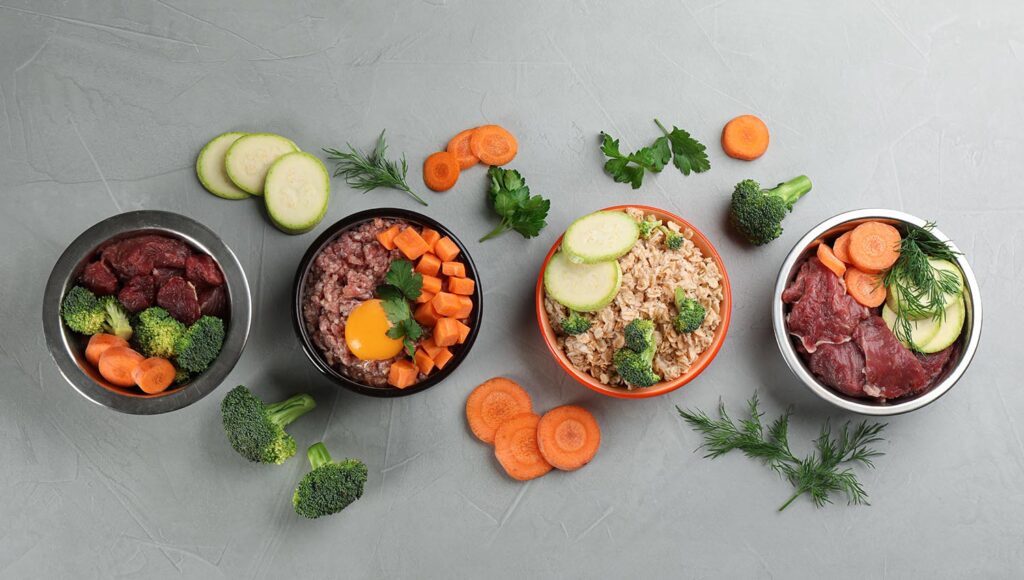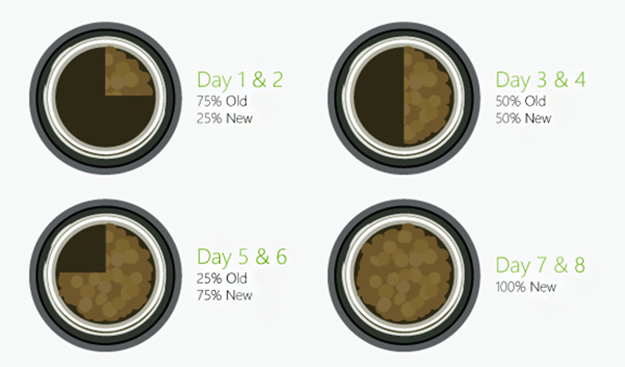
What is Rotational Feeding?
Rotational feeding is when you feed your pets a variety of food rather than the same thing every day.
Try offering a variety of animal-based proteins at mealtimes. If you feed kibble then adding a bit of raw food, wet food, tripe, chicken necks, toppers, almost raw. Let your imagination be your guide.
Why Rotate New Foods into Your Pet’s Diet?
- Feeding the same food every day can increase the risk of your pet developing food sensitivities or allergies.
- Varying our pet’s diet helps to ensure that they are getting an optimal, balanced total diet.
- According to Dr. Jean Dodds, rotating foods mimic the ancestral diet of dogs and helps to “create a strong intestinal environment”.
- Rotating different foods into the diet helps to create excitement at mealtimes. It also helps to create a strong bond between you and your pet.
Types of Rotational Feeding
There are a few basic types of rotational feeding. They can be used together or separately.
- Instead of always feeding just dry kibble, mix it up. Switch to a canned food or a raw recipe, are common forms of rotating.
- Another method is to use kibble as the base of the diet and add canned to the dry one day and the next maybe add a raw recipe to the dry. Freeze-dried and dehydrated recipes can also be added or used as the basis of the total recipe.
- Rotating the primary protein sources is another method that can be used separately or in conjunction with rotating food types. Switching from chicken to lamb to fish etc. is another rotational method. Many do this within the dry kibble food type and some also use wet or raw additions to the meal.
- A diverse diet consisting of varied proteins and food brands and recipes is critical to keeping a pet enjoying optimal health and allergy free. By rotating the protein sources in food, you can reduce the risk of a pet developing an allergy to it. By switching recipes and brands, you can ensure that a pet is receiving a diversified assortment of nutrients over time.
- Rotating a protein source and food recipe every 2-3 months (which is the same period used for elimination diets that are used to isolate food allergies) is a strategy that makes sense.
Transitioning
Rotating between proteins within a brand line is easy and doesn’t typically need a transition period. However, if you’re switching the base diet to a different brand, it is suggested to transition to help reduce the risk of digestive upset for around 10 days.






